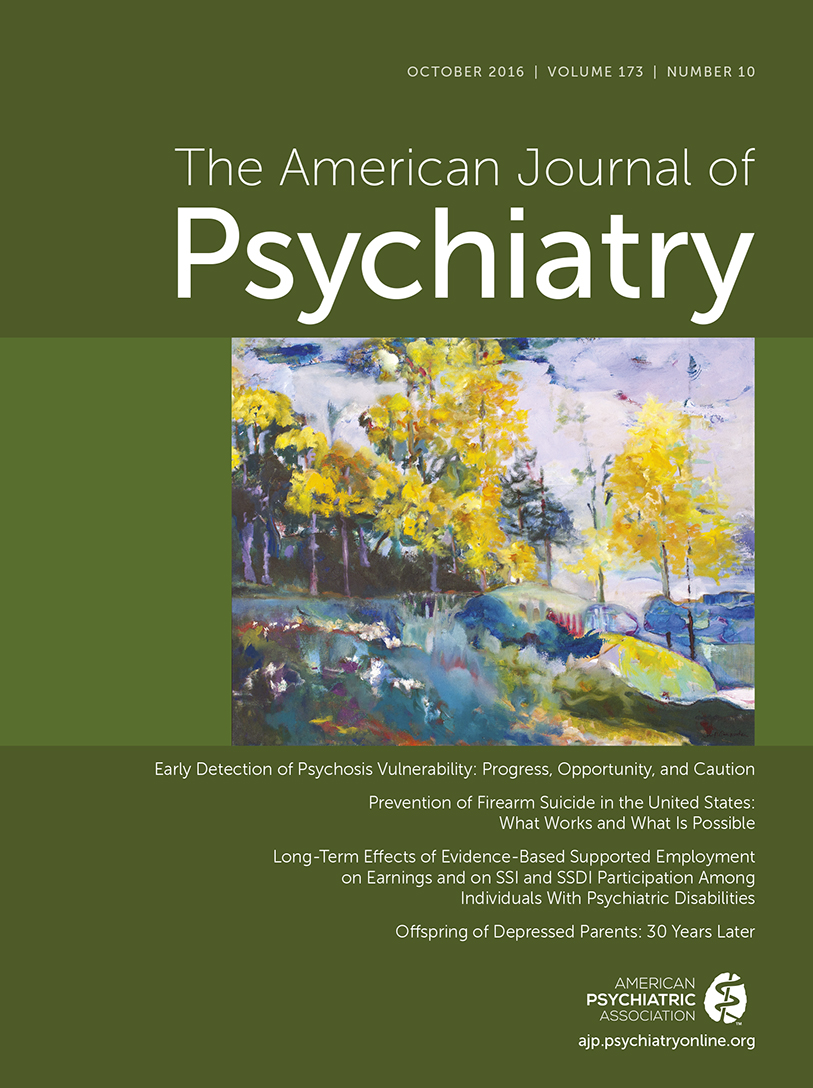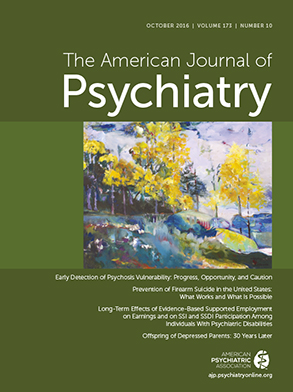In June of 2016, a new California law (End of Life Option Act) relating to physician-assisted end of life issues took effect. This law, similar to laws in Oregon, Washington, and Vermont, authorizes “an adult who meets certain qualifications, and who has been determined by his or her attending physician to be suffering from a terminal disease, as defined, to make a request for a drug prescribed pursuant to these provisions for the purpose of ending his or her life” (
1). Although the End of Life Option Act is silent on illnesses that are not deemed to be terminal, in other countries there is a trend for allowing physician-assisted suicide for intractable psychic pain (e.g., depression, bipolar disorder, borderline personality disorder). This has been written about, both in the popular media (
2) and in the scientific literature (
3–
5). In thinking about these developments, I was reminded of a patient I treated over 30 years ago, and particularly, of one comment he made that remained etched in my mind all these years.
Mr. A was a handsome, articulate man in his mid 30s who had a history of rapid-cycling bipolar disorder. We worked together intermittently over a period of 5 years, sometimes on a weekly basis, more often for medication management and dealing with crises. Mr. A was rarely euthymic; more often he was hypomanic or depressed. When hypomanic, he was charming, engaging, artistic, and a superb salesperson and entrepreneur who could do exceedingly well … until he became manic; then his charm turned to irritability and his entrepreneurship to gambling. He also spent much time depressed, having active suicidal ideation, but he had not made any suicide attempts. When depressed, he would be unemployed for sustained periods of time and, though never truly homeless, would have no consistent place of residence. He was estranged from his family and could not sustain any intimate relationships.
One of the most important things he taught me about this terrible illness was its unpredictability. He mused, “How can I have a relationship when I go to sleep in a barren one-room apartment sleeping on a cot, having no money, being alone, and wishing I could die, then wake up feeling wonderful and thinking everything will work out? How crazy is this? And, if I can’t stand to live like this, why should anyone else choose to share it with me?” I have found sharing this insight of his to be a very useful empathic intervention with bipolar patients, who often resonate with it immediately.
We tried the pharmacological interventions of the day, and when the depression was particularly intractable, he had two courses of ECT, which improved the depression but left him with significant memory impairment, about which he bitterly complained. Often he would scoff at the treatment I offered, and its (lack of) efficacy, but our rapport was such that he was mostly adherent with treatment recommendations.
At one session, when he was quite depressed and voicing suicidal ideation, I said I wanted him to be hospitalized, voluntarily if he agreed or involuntarily if he did not. In response to this, he said to me, “Lesser, you would have more compassion for an injured dog lying in the street than you have for me.” I was stung by this comment, for surely he knew how much I cared about him. Did he not remember presenting me with the medallion he received for completing the Los Angeles Marathon and then asking that I keep it, thanking me for “enabling” him to run in it? He had often made caustic comments about me (how I dressed for example), but these were always said with a twinkle in his eye and did not feel like serious barbs. Being accused of having “no compassion” was a whole different matter.
I did hospitalize him, and he did recover somewhat, but he continued to suffer greatly from his illness. Ultimately, he left treatment and moved away from the area where I practiced, and I had no further contact with him. About 5 years later, the physician who had performed the ECT gave me an obituary he had read about Mr. A. He had been found dead in a car, presumably a suicide.
Most of us have had (and will have) patients who commit suicide, despite our best efforts. In this case, I was somewhat able to distance myself from the feelings associated with a suicide, for after all, he was “not my patient” any longer. Little comfort, though. After all these years, his comment about my lack of compassion still rings in my ears. Is hospitalizing someone against their will an act of “compassion” or is it, in their eyes, the very opposite? He survived the acute crisis precipitating this event and went on to live at least 5 years more. But, if those 5 years were primarily full of psychic pain for him, I can see how he would look at my actions as not being in his best interest.
I wonder how the conversation with Mr. A might have gone if the End of Life Option Act, particularly the “European version,” was in place at the time. Having heard his and countless other stories and shared the pain patients experience as a result of their mental illness, do I believe that the patient’s “autonomy” should be the deciding factor? Do we ignore the fact that, for many patients, the acute psychic pain, managed empathically and contained, may recede? I am very uncomfortable with the movement to include mental disorders as a legitimate and “legal” reason to assist a patient to end his/her life, and I continue to believe in involuntary hospitalization when, in the clinician’s opinion, it is needed. Even this, a somewhat conservative position, can be challenged by those who believe that the “state” has no legal right to take away a person’s liberty, and there has long been a debate about the use (and utility) of involuntary hospitalization (
5–
7). Although there often is considerable angst when having to make these decisions, the literature suggests that close to 90% of those who survive a suicide attempt are alive decades later, and the majority of them are grateful that they did not die (
8). I understand this intellectually, but having worked with Mr. A, I have a more visceral understanding of both sides of this issue and see more clearly that, when looking through our own prisms of perspective, we can reach such different conclusions. The challenge therapists face, what I faced, is how to remain fully engaged with the patient when such a fundamental disagreement is present.

